Homesteading on a budget
Simple living is such a wonderful way to approach life. Paring back and being self-reliant on your own resources can be very liberating. But starting a homestead can be expensive! My goal today is to walk you through homesteading on a budget so no matter where you are financially, you can improve and take steps toward your goal.
Homesteading tips begin with your budget so you can work to live a self-sufficient lifestyle.
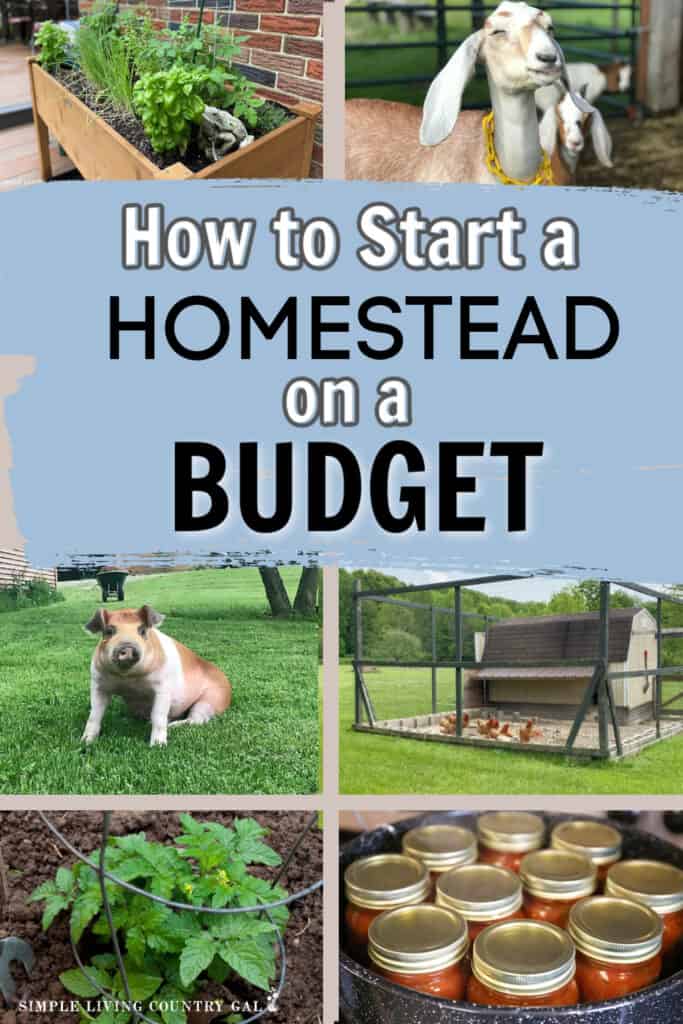
Homesteading is the art of self-sufficiency – the ability to grow your own food, raise your own livestock, and make do with what you have. It’s a lifestyle that is gaining popularity as more people seek to escape the grid and live off the land. However, starting a homestead can seem daunting – and expensive. The good news is, it doesn’t have to be. In this article, we’ll show you how to start your own homestead with little to no money. Yes, you read that right – you don’t need a lot of money to begin your journey towards self-sufficiency.
What is homesteading?
Homesteading is a lifestyle or practice of self-sufficiency and sustainability. It involves living off the land by growing your own food, preserving what you grow, raising livestock for meat and resources, and relying more on your abilities and skills. Homesteaders aim to reduce their reliance on commercial goods and services and have a motto of “Grow it, Raise it, Or Make it Rather Than Buy It.”
Living a homesteading life often promotes a simpler, more environmentally conscious way of living, emphasizing community, frugality, and a closer connection to nature.
What are the benefits of homesteading?
Homesteading offers numerous benefits that attract individuals and families seeking a self-sufficient and sustainable lifestyle. These include:
- Self-sufficiency in producing food and meeting basic needs.
- A healthier diet through organic gardening and food preservation.
- Environmental sustainability through eco-friendly practices.
- Cost savings on groceries and utilities.
- A deeper connection to nature.
- Skill development, community building, and the inheritance protection of a homestead estate.
Homesteading promotes independence, freedom, and mental well-being while fostering knowledge and a sense of belonging within a supportive network.
Homesteading on a Budget
Many times it can be incredibly expensive to begin a new approach to life. To help make this adventure more affordable, we have a few ideas to consider. Not all will be an option, but some, hopefully, will be enough to get you started.
Use a shed as a livestock shelter
When it comes to raising livestock on a budget, finding a shelter for your animals can be a huge expense. However, if you have an old shed or outbuilding you’re not using; it can easily be converted into a livestock shelter. With a little bit of elbow grease, you can create a comfortable space for your animals.
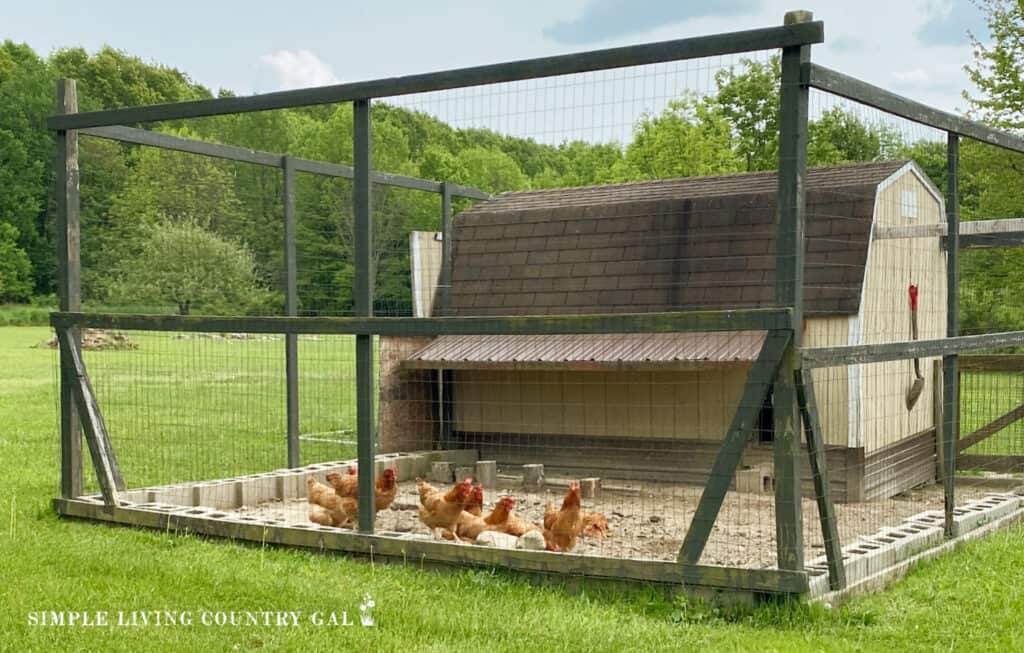
You can also add on a few outside additions to protect them from the elements and weather in your area.
- Tarps – Work great to keep rain and snow from damaging a small grazing area of a coop or shelter.
- Wood or pallets – Can stop wind and snow from building up in open areas. They can also be used as a barrier for a muddy section of a run or pasture.
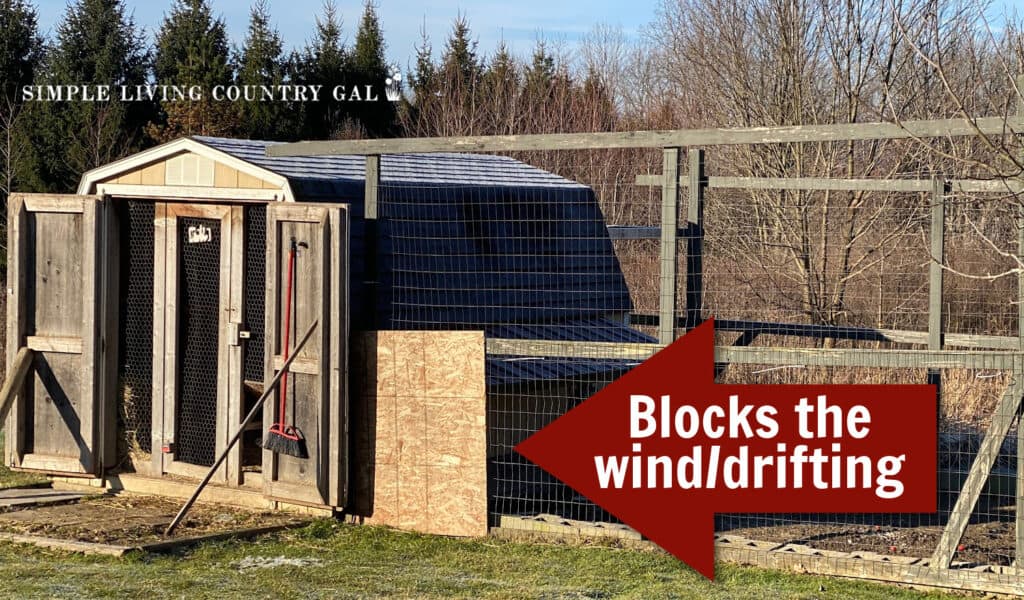
Use old containers to grow a garden
Starting a garden can be expensive, especially if you’re buying new pots and planters. However, you can repurpose old items from around your home:
- Buckets
- Trash cans
- Feed bags
- Straw Bales
You can also purchase grow bags. For a small investment, you will have the containers you need to use year after year.
What size grow bag do you need?
- 5-gallon – Good for shallow root plants like radishes, lettuce, herbs, or peppers.
- 7-gallon – Good for peppers, squash, carrots, or onions.
- 10-gallon – Good for bigger root systems like tomatoes, potatoes, pumpkin, or melons.
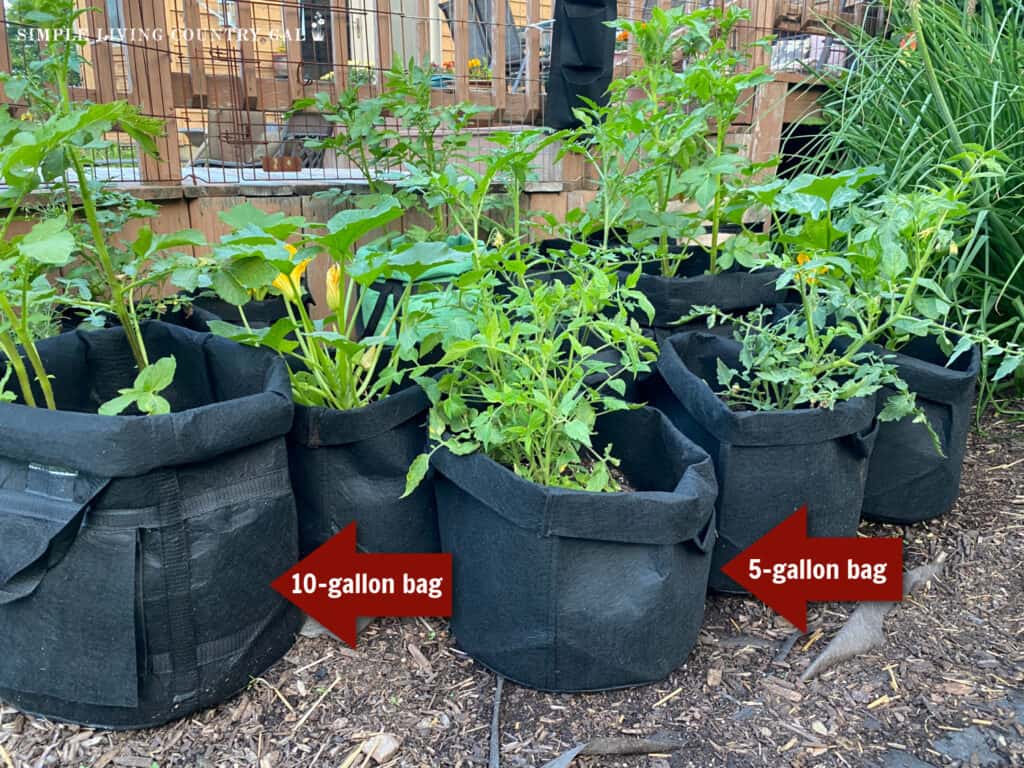
How to prep a container to grow vegetables in
Containers are a great way to set up a garden just about anywhere around your home. Before you plant however, there are a few things to do to prepare your container for growing.
- Create drainage. This is important to have so your roots do not sit in wet soil, risking root rot and other plant issues. You can drill holes in the bottom of your container or use a nail/hammer.
- Add soil. You will want to add soil that is meant for growing in containers. You can get your own soil, or you can purchase soil that is compressed and more cost-efficient.
- Location. Finally, be sure that you put your containers where they are near water and in an area that gets at least 6-8 hours of sunlight each day.
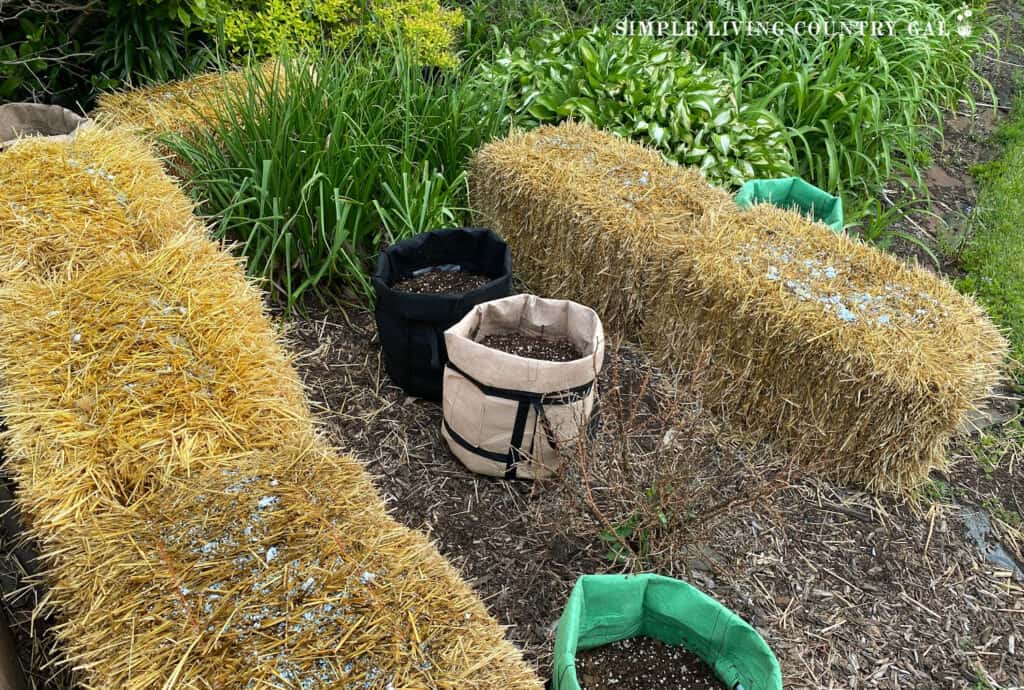
Preserve your own food
One of the biggest expenses for a homestead is buying food during the off-season. However, you can preserve your own food for the pantry and freezer by canning, sheet freezing, pickling, and dehydrating. It might seem like a lot of work, but it’s a cost-effective way to stock up on fruits and vegetables for the winter months. Plus, preserving your own food is a great way to ensure that you know exactly what’s in it.
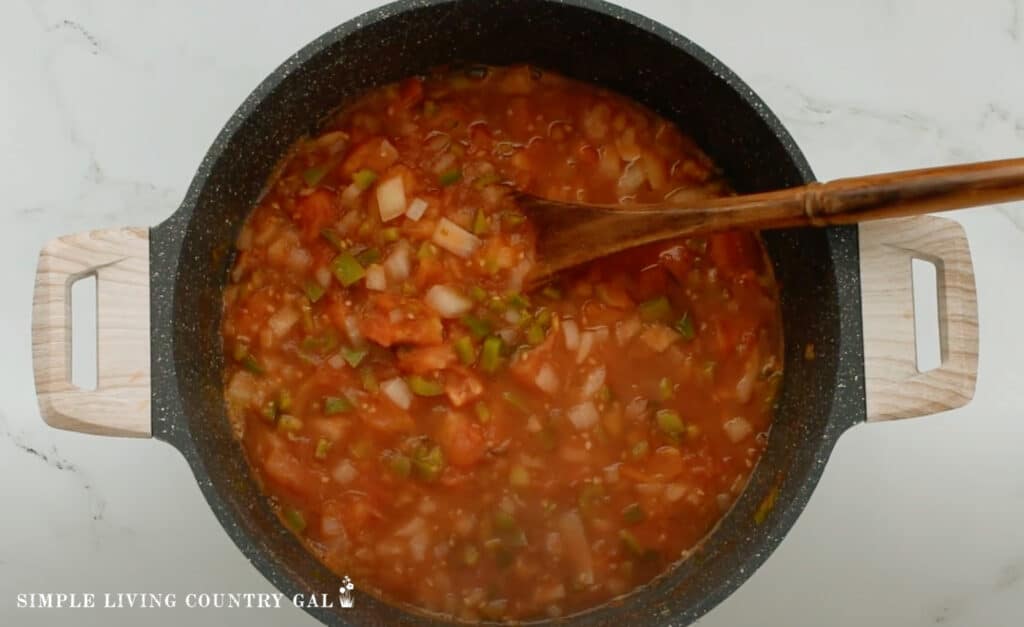
More Food Preservation Resources:
Reuse, repurpose, and recycle
One of the basic principles of homesteading is to reduce waste and repurpose what you already have. For example, old clothes can be turned into rags, glass jars can be used for storage, and scrap wood can be used to build furniture. Not only does this save you money, but it’s also good for the environment.
Start small
When it comes to homesteading, it’s important to start small. You don’t need to go all-in right away and buy a large plot of land and a herd of animals. Start with a small garden table on your porch, a few straw bales to grow tomatoes in, or a few chickens, and work your way up from there. As you become more experienced, you can add more to your homestead.
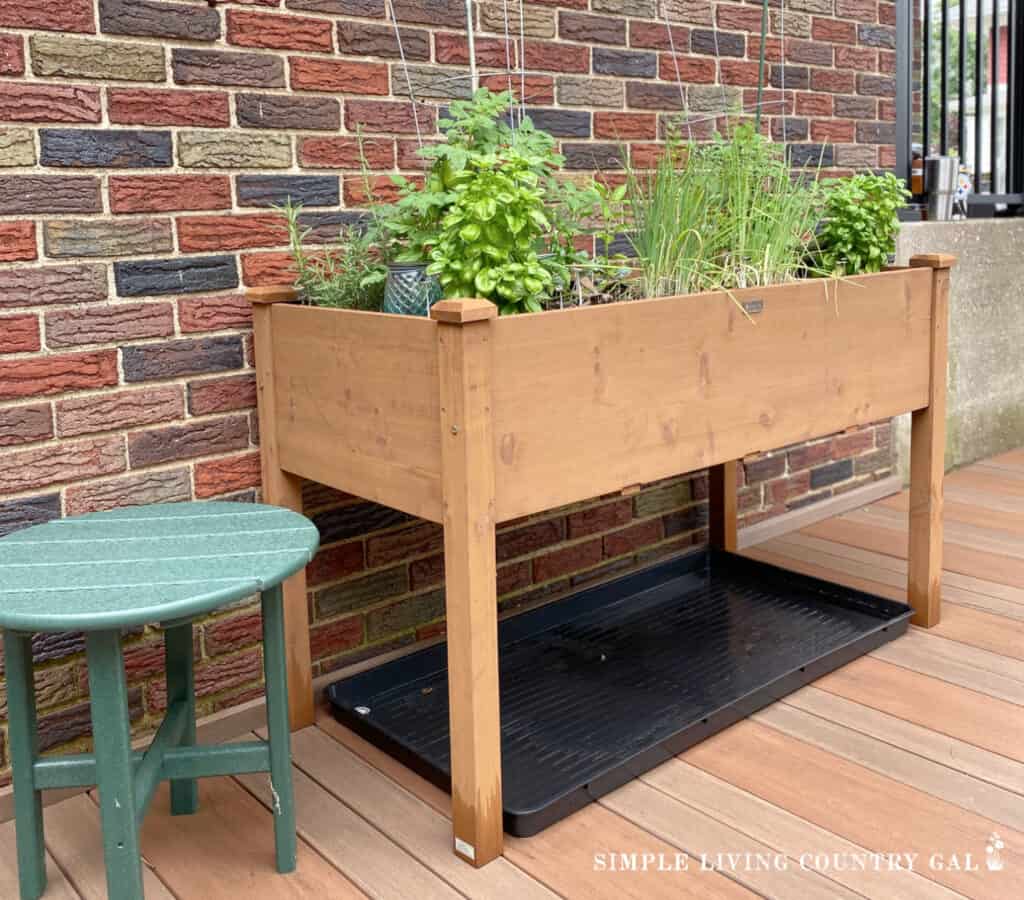
Homesteading is a fulfilling way of life that allows you to be more self-sufficient and sustainable. However, it doesn’t have to be expensive. By using what you have, and being resourceful, you can start your homesteading journey with little to no money. Don’t let the cost of getting started deter you from experiencing the joy and satisfaction of a self-sufficient lifestyle. Remember, homesteading is a journey, not a destination. Start where you are, use what you have, and keep moving forward.
More Homesteading Resources:
Find this and more on the Homestead blog hop!

Great post with good tips. The most troubling thing about homesteading is the lack of time. It’s almost impossible to work and do everything else that’s needed. Plus, it’s hard to travel for at least a vacation trip when you have animals. I never gave up on the idea, I’m just saving it for retirement.
Wonderful post! Thanks for sharing